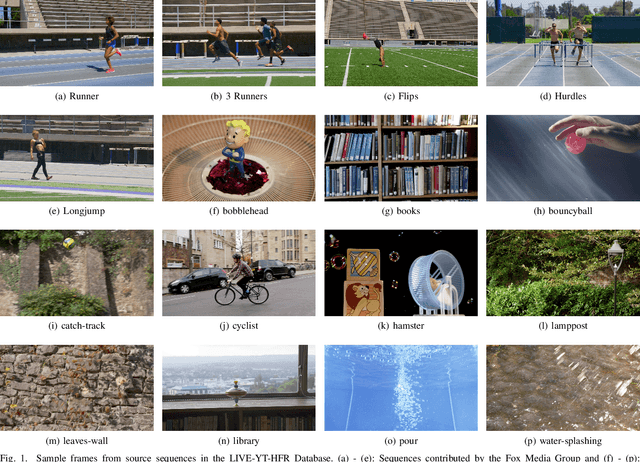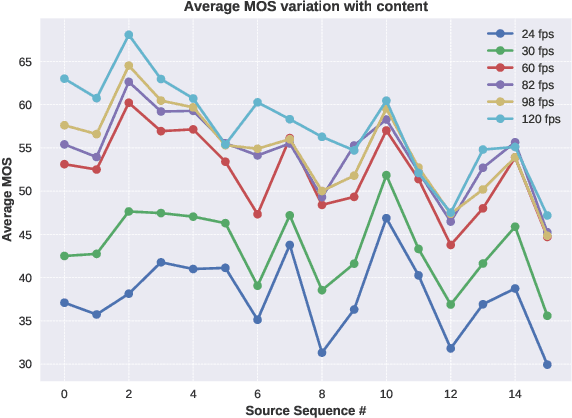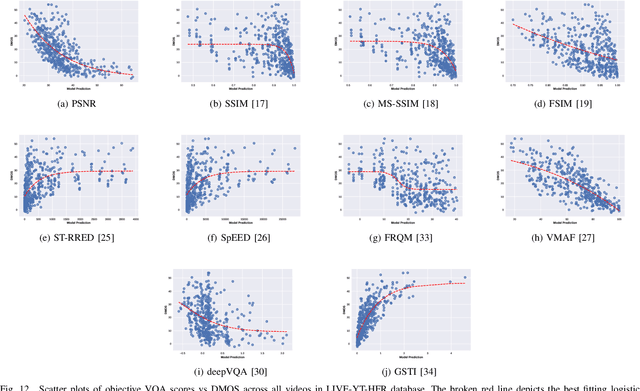Subjective and Objective Quality Assessment of High Frame Rate Videos
Paper and Code
Jul 22, 2020



High frame rate (HFR) videos are becoming increasingly common with the tremendous popularity of live, high-action streaming content such as sports. Although HFR contents are generally of very high quality, high bandwidth requirements make them challenging to deliver efficiently, while simultaneously maintaining their quality. To optimize trade-offs between bandwidth requirements and video quality, in terms of frame rate adaptation, it is imperative to understand the intricate relationship between frame rate and perceptual video quality. Towards advancing progression in this direction we designed a new subjective resource, called the LIVE-YouTube-HFR (LIVE-YT-HFR) dataset, which is comprised of 480 videos having 6 different frame rates, obtained from 16 diverse contents. In order to understand the combined effects of compression and frame rate adjustment, we also processed videos at 5 compression levels at each frame rate. To obtain subjective labels on the videos, we conducted a human study yielding 19,000 human quality ratings obtained from a pool of 85 human subjects. We also conducted a holistic evaluation of existing state-of-the-art Full and No-Reference video quality algorithms, and statistically benchmarked their performance on the new database. The LIVE-YT-HFR database has been made available online for public use and evaluation purposes, with hopes that it will help advance research in this exciting video technology direction. It may be obtained at \url{https://live.ece.utexas.edu/research/LIVE_YT_HFR/LIVE_YT_HFR/index.html}
 Add to Chrome
Add to Chrome Add to Firefox
Add to Firefox Add to Edge
Add to Edge